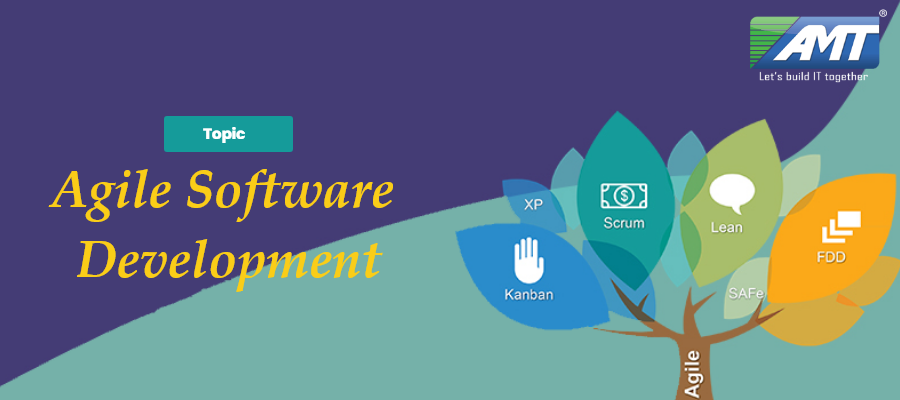Agile software development comprises various approaches to software development under which requirements and solutions evolve through the collaborative effort of self-organizing and cross-functional teams and their customer(s)/end user(s). It advocates adaptive planning, evolutionary development, early delivery, and continual improvement, and it encourages rapid and flexible response to change.
The term agile (sometimes written Agile) was popularized, in this context, by the Manifesto for Agile Software Development. The values and principles espoused in this manifesto were derived from and underpin a broad range of software development frameworks, including Scrum and Kanban.
While there is much anecdotal evidence that adopting agile practices and values improves the agility of software professionals, teams and organizations, some empirical studies have disputed that evidence.
Based on their combined experience of developing software and helping others do that, the seventeen signatories to the manifesto proclaimed that they value:
- Individuals and Interactions over processes and tools
- Working Software over comprehensive documentation
- Customer Collaboration over contract negotiation
- Responding to Change over following a plan
That is to say, the items on the left are valued more than the items on the right.
As Scott Ambler elucidated:
- Tools and processes are important, but it is more important to have competent people working together effectively.
- Good documentation is useful in helping people to understand how the software is built and how to use it, but the main point of development is to create software, not documentation.
- A contract is important but is no substitute for working closely with customers to discover what they need.
- A project plan is important, but it must not be too rigid to accommodate changes in technology or the environment, stakeholders’ priorities, and people’s understanding of the problem and its solution.
The Manifesto for Agile Software Development is based on twelve principles:
- Customer satisfaction by early and continuous delivery of valuable software.
- Welcome changing requirements, even in late development.
- Deliver working software frequently (weeks rather than months)
- Close, daily cooperation between business people and developers
- Projects are built around motivated individuals, who should be trusted
- Face-to-face conversation is the best form of communication (co-location)
- Working software is the primary measure of progress
- Sustainable development, able to maintain a constant pace
- Continuous attention to technical excellence and good design
- Simplicity—the art of maximizing the amount of work not done—is essential
- Best architectures, requirements, and designs emerge from self-organizing teams
- Regularly, the team reflects on how to become more effective, and adjusts accordingly
Most agile development methods break product development work into small increments that minimize the amount of up-front planning and design. Iterations, or sprints, are short time frames (timeboxes) that typically last from one to four weeks. Each iteration involves a cross-functional team working in all functions: planning, analysis, design, coding, unit testing, and acceptance testing. At the end of the iteration a working product is demonstrated to stakeholders. This minimizes overall risk and allows the product to adapt to changes quickly. An iteration might not add enough functionality to warrant a market release, but the goal is to have an available release (with minimal bugs) at the end of each iteration. Multiple iterations might be required to release a product or new features. Working software is the primary measure of progress.
A common characteristic in agile software development is the daily stand-up (also known as the daily scrum). In a brief session, team members report to each other what they did the previous day toward their team’s iteration goal, what they intend to do today toward the goal, and any roadblocks or impediments they can see to the goal.
The above is a brief about Agile software development. Watch this space for more updates on the latest trends in Technology.
